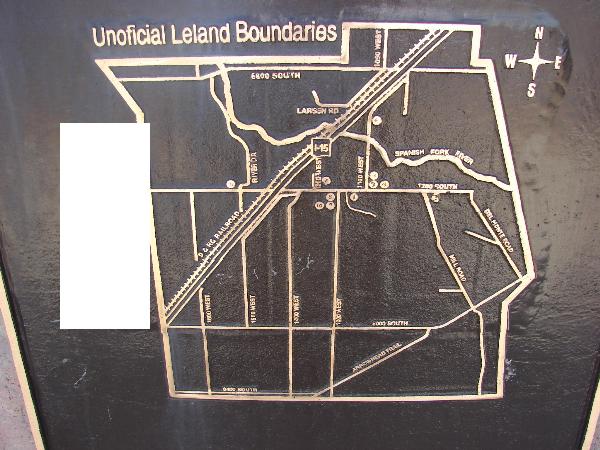Tags

This area of Utah County was brought under cultivation and irrigation in the mid-1850s. A survey in the 1860s known as the “New Survey” designated where permanent roads and irrigation ditches would be. Leland has always been a highly productive irrigated agriculture area. Major crops have been barley, wheat, corn, sugar beets and alfalfa. Canning crops were peas, lima beans, and sweet corn. Beef and dairy cattle are the major livestock.
LDS Church records stated that it was originally the South Branch of Spanish Fork 2nd Ward and later the Riverside Branch, 2nd Ward. On April 29, 1900, LDS Apostle Reed Smoot officially organized a new ward. Those present selected the name “Leland,” named after Leland Stanford, founder of Leland Stanford University. Membership of the new Leland Ward was 224. Andrew Jensen, Church Historian, in 1900 recorded,” Leland Ward consisted of Latter-day Saints residing in a farming district lying southwest of Spanish Fork.
The center of the ward or the place where Leland schoolhouse stands, is a certain point on the country road about 1/2 mile south of Spanish Fork River or 2 1/2 miles, by nearest road from the center of Spanish Fork. The ward extends from the school house 2 miles east, 2 miles south, 1 mile west, and 1 1/2 miles north; in other words, the ward extends from north to south about 4 miles, from east to west about the same distance, making the area of the ward something like 4 miles square. Nearly all of the inhabitants within the limits of the ward are Latter-day Saints and meetings and Sunday School sessions are held in the district school house.”
The monument was erected and dedicated as a special Sesquicentennial project in the year 1997 to honor the stalwart Leland Pioneer settlers, and recognize them for their endurance, hard work and perseverance in the settling of Leland.


Another batch of photos below from May 2016:







Visit my list of places in Utah.

Pingback: Spanish Fork, Utah | JacobBarlow.com
Pingback: Benjamin, Utah | JacobBarlow.com
Pingback: Larsen / Moran House | JacobBarlow.com
Noticed how “Unoficial” was spelled. I’ll bet the foundry had to give them back some bucks!
Pingback: Utah County | JacobBarlow.com